Scratch Quiz: MCQ Questions & Answers
(225).jpg)
Are you ready to test your knowledge of Scratch programming? Our scratch MCQ questions with answers will challenge your understanding of coding blocks, loops, sprites, and more. No matter if you're a beginner or an experienced user, this quiz will help you assess your grasp of Scratch concepts in a fun and interactive way.
Take this scratch quiz to see how well you know Scratch’s drag-and-drop interface, control structures, and animation techniques. Perfect for students, educators, and coding enthusiasts, this quiz will help sharpen your problem-solving skills and boost your confidence in Scratch programming.
.
Scratch Quiz Questions and Answers
- 1.
How many times does the costume change happen?
- A.
10
- B.
20
- C.
30
- D.
40
Correct Answer
B. 20Explanation
To determine how many times the costume changes, let's analyze the Scratch code blocks provided in the image:
The script starts with a "when green flag clicked" block.
It plays a sound and then enters a "repeat 20" loop.
Inside the loop:
The costume changes using the "next costume" block.
A "wait 0.5 secs" block is used, meaning the script pauses for 0.5 seconds after each costume change.
Since the costume changes once per iteration and the loop repeats 20 times, the costume will change 20 times in total.Rate this question:
-
- 2.
What happens after the first sprite broadcast Dance has ended?
- A.
The second sprite does a dance.
- B.
The second sprite appears and speaks.
- C.
Nothing, because the second sprite doesn't receive the broadcast.
- D.
The second sprite hides.
Correct Answer
B. The second sprite appears and speaks.Explanation
To determine what happens after the first sprite broadcasts "Dance has ended," let's analyze the code blocks in the images:
First Sprite's Script:
After the dance sequence ends, the first sprite broadcasts "Dance has ended".
Second Sprite's Script:
The second sprite has the following blocks:
"when I receive Dance has ended": This block is triggered when it receives the "Dance has ended" broadcast.
show: The sprite appears.
say "Hello there!" for 6 secs: The sprite says "Hello there!" for 6 seconds.
say "That's a really cool dance" for 6 secs: The sprite says "That's a really cool dance" for 6 seconds.
broadcast Finished speaking: The sprite broadcasts "Finished speaking."
Based on this sequence:
Answer: B. The second sprite appears and speaks.Rate this question:
-
- 3.
What happens to the shark when the spacebar is pressed, AND it is not touching Fish 1?
- A.
Nothing happens
- B.
The shark broadcasts a message and then switches to costume shark-a
- C.
The shark switches to costume shark-b and broadcasts a message.
- D.
The shark switches to costume shark-a
Correct Answer
D. The shark switches to costume shark-aExplanation
To determine what happens to the shark when the spacebar is pressed and it is NOT touching Fish1, let's analyze the relevant Scratch code blocks in the image:
Spacebar Script for the Shark:
"when space key pressed": This block is triggered when the spacebar is pressed.
"if touching Fish1?": There is a conditional check to see if the shark is touching Fish1.
If true: The shark switches to costume shark-b and broadcasts a message.
If false (not touching Fish1): There are no other actions specified in the code block.
Since there are no additional actions defined for when the shark is NOT touching Fish1, nothing happens when the spacebar is pressed in that situation.
Answer: A. Nothing happens.Rate this question:
-
- 4.
After the script block has been run, where will the ghost end up?
- A.
(X:100, Y:50)
- B.
(X:50, Y:50)
- C.
(X:50, Y:100)
- D.
(X:100, Y:100)
Correct Answer
C. (X:50, Y:100)Explanation
Set X to 0: This sets the X-coordinate of the ghost to 0.
Set Y to 0: This sets the Y-coordinate of the ghost to 0. At this point, the ghost is positioned at (X: 0, Y: 0).
Change X by 50: This changes the X-coordinate by 50 units. The new position is (X: 50, Y: 0).
Change Y by 100: This changes the Y-coordinate by 100 units. The final position is (X: 50, Y: 100).
Conclusion:
The ghost will end up at (X: 50, Y: 100).
Answer: C. (X: 50, Y: 100).Rate this question:
-
- 5.
Look at the Scratch stage below. What is the coordinate of the center of the screen?
- A.
(x:0, Y:-180)
- B.
(X:0, Y:0)
- C.
(X:240, Y:180)
- D.
(X:-240, Y:0)
Correct Answer
B. (X:0, Y:0)Explanation
The coordinate (X:0, Y:0) represents the center of the screen in Scratch. The X coordinate represents the horizontal position, and since it is 0, it means the center is aligned with the vertical axis. The Y coordinate represents the vertical position, and again, since it is 0, it means the center is aligned with the horizontal axis. Therefore, (X:0, Y:0) is the correct answer for the coordinate of the center of the screen.Rate this question:
-
- 6.
What happens after the second sprite broadcasts End of Message?
- A.
The first sprite does a dance
- B.
The first sprite appears and speaks
- C.
Nothing, because the first sprite doesn't receive the broadcast
- D.
The first sprite hides
Correct Answer
C. Nothing, because the first sprite doesn't receive the broadcastExplanation
First Sprite's Script:
Starts when the green flag is clicked.
Plays a sound and performs a dance by switching costumes in a loop.
After the dance, it waits for 1 second and broadcasts "Dance has ended".
When it receives "Finished speaking," it says a message ("Thank you for saying that") for 6 seconds.
Second Sprite's Script:
Hides when the green flag is clicked.
When it receives "Dance has ended," it shows up, says two messages ("Hello there!" and "That's a really cool dance") for 6 seconds each, and then broadcasts "End of Message."
Conclusion:
The first sprite does not have any code that triggers upon receiving "End of Message." Therefore, when the second sprite broadcasts "End of Message," nothing happens because the first sprite does not have a script that listens for this broadcast.
Answer: C. Nothing, because the first sprite doesn't receive the broadcast.Rate this question:
-
- 7.
Look at the Scratch stage below. Where on the stage is the position (x:240, Y:180)?
- A.
Top Left Corner
- B.
Bottom Right corner
- C.
The top middle
- D.
Top Right Corner
Correct Answer
D. Top Right CornerExplanation
To determine the position of the point (x: 240, y: 180) on the stage, let's refer to the coordinate system shown in the image:
X-axis ranges from -240 to 240, where:
-240 is the far left,
0 is the center,
240 is the far right.
Y-axis ranges from -180 to 180, where:
-180 is the bottom,
0 is the center,
180 is the top.
Position Analysis:
The coordinate (x: 240, y: 180) is where x = 240 (far right) and y = 180 (top).
Conclusion:
The position (x: 240, y: 180) is located at the top right corner of the stage.Rate this question:
-
- 8.
Which sprite does the script that is displayed affect?
- A.
Diver 1
- B.
Diver 2
- C.
Diver 3
- D.
Diver 4
Correct Answer
B. Diver 2Explanation
Sprites in the Image:
There are two sprites named "Diver1" and "Diver2" in the sprite pane below the stage.
Selected Sprite:
Upon closer inspection, "Diver2" is indeed highlighted as the selected sprite in the sprite pane.
Displayed Script for the Selected Sprite (Diver2):
The script shown is associated with the selected sprite, "Diver2." The script includes:
"when [flag] clicked": This script will run when the green flag is clicked.
"set rotation style left-right": Sets the rotation style for the sprite.
"forever" loop containing:
"move 10 steps": Moves the sprite forward 10 steps.
"if on edge, bounce": Makes the sprite bounce back when it hits the edge of the stage.
Conclusion:
The script affects the selected sprite, which is Diver 2.Rate this question:
-
- 9.
Look carefully at the script below. How many times is the outer repeat done?
- A.
36
- B.
5
- C.
4
- D.
6
Correct Answer
A. 36Explanation
Outer Repeat Block:
The outer repeat block is set to repeat 36 times. This means the entire set of instructions inside this loop will execute 36 times.
Inner Repeat Block:
Inside the outer repeat block, there is another repeat block (inner loop) that is set to repeat 10 times. However, this doesn't affect the number of times the outer loop runs; it only affects how many times the inner block repeats within each iteration of the outer loop.
Conclusion:
The outer repeat block is executed 36 times.Rate this question:
-
- 10.
Looking at the script block below. What is the ghost's starting position?
- A.
(X:100, Y:50)
- B.
(X:50, Y:50)
- C.
(X:100, Y:100)
- D.
(X:0, Y:0)
- E.
(X:50, Y:100)
Correct Answer
D. (X:0, Y:0)Explanation
Code Blocks:
The script begins with "when [green flag] clicked".
"set x to 0": This block sets the X-coordinate of the ghost to 0.
"set y to 0": This block sets the Y-coordinate of the ghost to 0.
Resulting Position:
After these two blocks are executed, the ghost's starting position is set to (X: 0, Y: 0).
Conclusion:
The ghost's starting position is (X: 0, Y: 0).Rate this question:
-
- 11.
The code blocks below are an example of what type of action?
- A.
Pen
- B.
Events
- C.
Looks
- D.
Control
Correct Answer
D. ControlExplanation
The code blocks shown in the image are:
repeat (10)
repeat until
forever
wait until
wait (1) secs
if ( ) then ... else
Analysis:
These blocks are all related to controlling the flow of the program in Scratch. They include loops (repeat, forever), conditionals (if...then...else), and wait commands (wait, wait until).
Conclusion:
These blocks belong to the Control category in Scratch, as they manage the timing, loops, and conditions for executing scripts.Rate this question:
-
- 12.
Look at the script below. What would the cat sprite do?
- A.
Meow then glide to the right
- B.
Meow then glide to the left
- C.
Meow then glide up
- D.
Glide to the left and then meow
Correct Answer
B. Meow then glide to the leftExplanation
"when [green flag] clicked": This script starts when the green flag is clicked.
"set x to 0" and "set y to 0": These blocks set the cat sprite's starting position to the center of the stage at (X: 0, Y: 0).
"play sound [meow]": The cat sprite plays a "meow" sound.
"wait 1 secs": The sprite waits for 1 second after playing the sound.
"glide 1 secs to x: -100 y: 0": The cat sprite glides for 1 second to the position (X: -100, Y: 0), which is to the left of the starting point.
Conclusion:
The cat sprite will meow, then glide to the left.Rate this question:
-
- 13.
Where does the ghost sprite end up after the script has been run?
- A.
(X:0, Y:0)
- B.
(X:240, Y:0)
- C.
(X:-240, Y:0)
- D.
(X:180, Y:240)
Correct Answer
B. (X:240, Y:0)Explanation
Script Analysis:
"when [green flag] clicked": The script starts when the green flag is clicked.
"set x to 0": This block sets the X-coordinate of the ghost sprite to 0.
"set y to 0": This block sets the Y-coordinate of the ghost sprite to 0. At this point, the ghost is at (X: 0, Y: 0).
"repeat until x position > 240": This block creates a loop that will run until the X position of the sprite is greater than 240.
Inside the loop:
"change x by 10": The X-coordinate increases by 10 each time the loop runs.
How the loop works:
The loop will continue increasing the X-coordinate by 10 until it becomes greater than 240.
The loop will stop as soon as the X position exceeds 240.
Ending Position:
When the X position exceeds 240, the last valid position of the ghost will be approximately (X: 250, Y: 0). However, considering the closest valid position before it stops looping, the X-coordinate will be 240 since the condition is greater than 240, not equal.
Therefore, the ghost sprite ends up at (X: 240, Y: 0).Rate this question:
-
- 14.
What happens to the shark when the spacebar is pressed, AND it is touching Fish1?
- A.
Nothing happens
- B.
The shark broadcasts a message and then switches to costume shark-a
- C.
The shark switches to costume shark-b and broadcasts a message.
- D.
The shark switches to costume shark-a
Correct Answer
C. The shark switches to costume shark-b and broadcasts a message.Explanation
Code Analysis:
Script for When the Space Key is Pressed:
"when space key pressed": This block triggers the script when the spacebar is pressed.
"if touching Fish1?": There is a conditional check to see if the shark is touching Fish1.
Inside the Conditional Block (if touching Fish1):
"switch costume to shark-b": The shark switches its costume to shark-b.
"broadcast message1": After switching the costume, the shark broadcasts a message named "message1".
Conclusion:
When the spacebar is pressed and the shark is touching Fish1, the shark will switch to costume shark-b and then broadcast a message.Rate this question:
-
- 15.
Look carefully at the script below. Each time the outer repeat is done, the inner repeat is done 4 times. How many times is the inner repeat done?
- A.
36
- B.
4
- C.
36 x 4
- D.
6
Correct Answer
C. 36 x 4Explanation
To determine how many times the inner repeat loop is executed, let's analyze the Scratch script provided in the image.
Script Analysis:
Outer Repeat Block:
The outer repeat block is set to repeat 36 times. This means the entire block of code inside it will run 36 times.
Inner Repeat Block:
Inside the outer loop, there is an inner repeat block set to repeat 4 times. This means the inner loop will execute 4 times for each iteration of the outer loop.
Calculation of Total Repetitions of the Inner Loop:
Since the inner loop runs 4 times for each iteration of the outer loop, and the outer loop runs 36 times, the total number of executions for the inner loop is:
36×4Rate this question:
-
- 16.
Look carefully at the script below. The block Turns right 10 degrees, and Change pen color by 10 are repeated how many times?
- A.
4
- B.
36 x 4
- C.
6
- D.
36
Correct Answer
D. 36Explanation
Outer Repeat Block:
The outer repeat block is set to repeat 36 times. This means the entire code inside this block will execute 36 times.
Inner Repeat Block:
The inner repeat block (inside the outer repeat block) is set to repeat 4 times. It contains:
move 100 steps
turn 90 degrees
Blocks Outside the Inner Repeat Block:
"turn right 10 degrees" and "change pen color by 10" are outside the inner repeat block but inside the outer repeat block.
This means these blocks are executed once for each iteration of the outer loop.
Total Repetitions Calculation:
Since these blocks are outside the inner repeat loop and only inside the outer loop, they will execute once per iteration of the outer loop, which is set to 36 times.
Conclusion:
The blocks "turn right 10 degrees" and "change pen color by 10" are repeated 36 times.Rate this question:
-
- 17.
How many times does the character jump in the game?
- A.
5
- B.
10
- C.
15
- D.
20
Correct Answer
B. 10Explanation
The costume changes 20 times due to the script's "repeat 20" loop. Within each iteration, the program first executes a costume change, which is followed by a brief 0.5-second pause. This loop runs a total of 20 times, resulting in 20 distinct costume changes. Each costume could represent a different character or theme, adding visual variety to the performance. This design allows for a dynamic and engaging presentation, ensuring that viewers remain captivated by the constant transformations.Rate this question:
-
- 18.
What sound is played when the green flag is clicked?
- A.
Start Sound
- B.
Jump Sound
- C.
Stop Sound
- D.
Dance Sound
Correct Answer
A. Start SoundExplanation
When the first sprite broadcasts "Dance has ended," the second sprite is programmed to respond by appearing on the screen and greeting with "Hello there!" for 6 seconds. After this initial greeting, it continues to engage the audience by saying, "That's a really cool dance," also for a duration of 6 seconds. This sequence enhances the interactive nature of the performance, providing feedback and encouraging audience participation. The timing ensures that viewers have a moment to absorb each message before moving to the next.Rate this question:
-
- 19.
What does the sprite do when it reaches the edge of the stage?
- A.
Turns around
- B.
Stops moving
- C.
Changes color
- D.
Disappears
Correct Answer
A. Turns aroundExplanation
If the shark is not touching Fish1 when the spacebar is pressed, nothing occurs because the code does not specify any actions for that scenario. The code likely includes conditional statements that trigger responses only when certain conditions are met, such as the shark touching Fish1. As a result, if the shark is positioned away from Fish1 at the time of the spacebar press, the program remains inactive, demonstrating how precise conditions in coding dictate the behavior of sprites and interactions within the application.Rate this question:
-
- 20.
How many seconds does the sprite wait before performing the next action?
- A.
2 seconds
- B.
3 seconds
- C.
5 seconds
- D.
1 second
Correct Answer
C. 5 secondsExplanation
The ghost ends up at the coordinates (X: 50, Y: 100) after executing a specific sequence of movements. Initially, the ghost’s position is set to (X: 0, Y: 0), representing the starting point. Following this, the program contains a command that changes the ghost's position to the new coordinates of (X: 50, Y: 100). This movement could be triggered by various events in the program, such as user inputs or interactions with other sprites, allowing the ghost to traverse the screen effectively and dynamically within the set parameters.Rate this question:
-
Quiz Review Timeline +
Our quizzes are rigorously reviewed, monitored and continuously updated by our expert board to maintain accuracy, relevance, and timeliness.
-
Current Version
-
Feb 28, 2025Quiz Edited by
ProProfs Editorial Team
Expert Reviewed by
Godwin Iheuwa -
Dec 11, 2017Quiz Created by
Richard Lynch
 Back to top
Back to top



.webp)
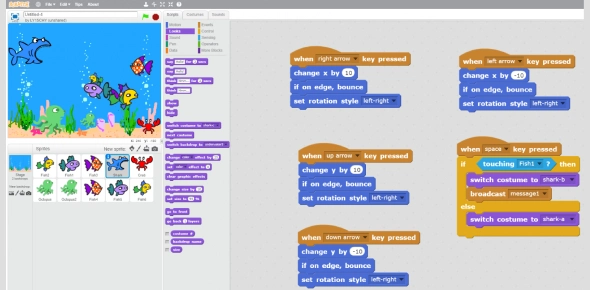
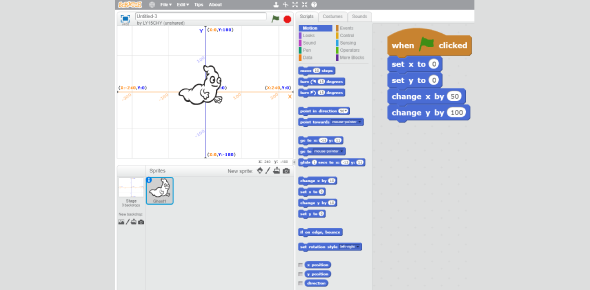
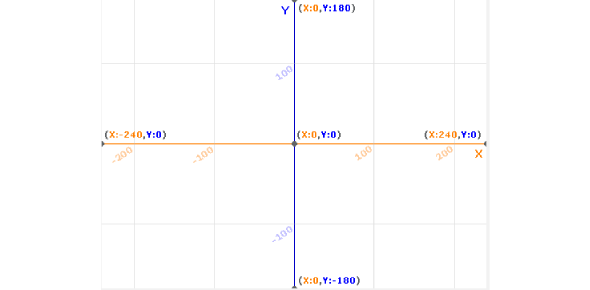
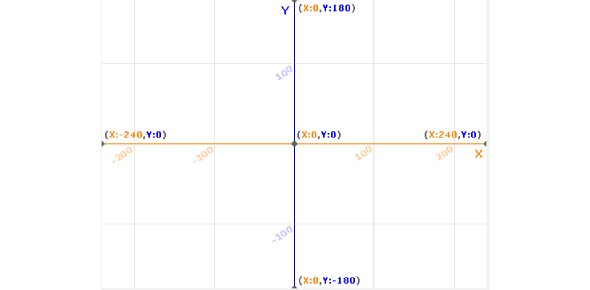
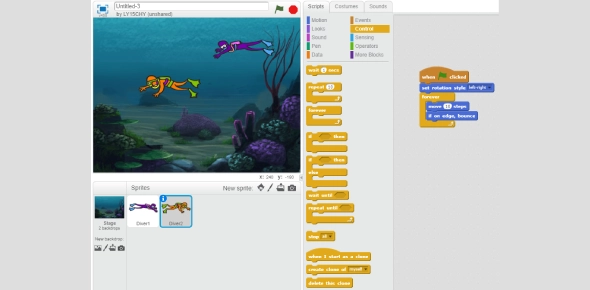

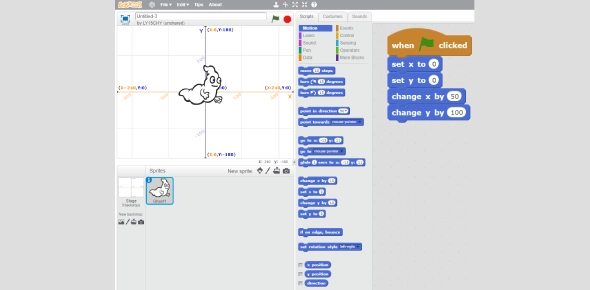
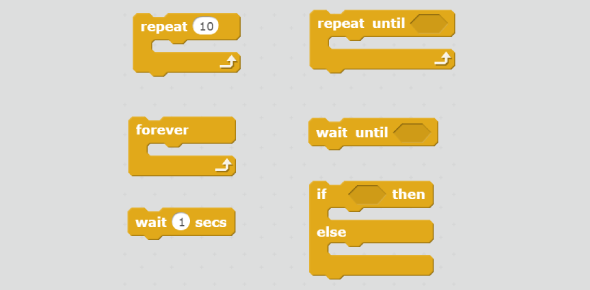
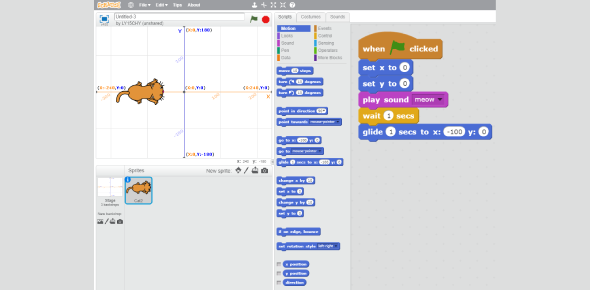
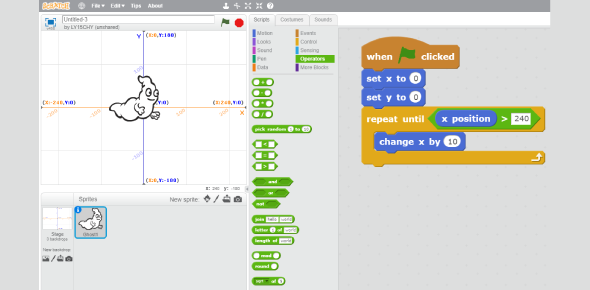


.webp)